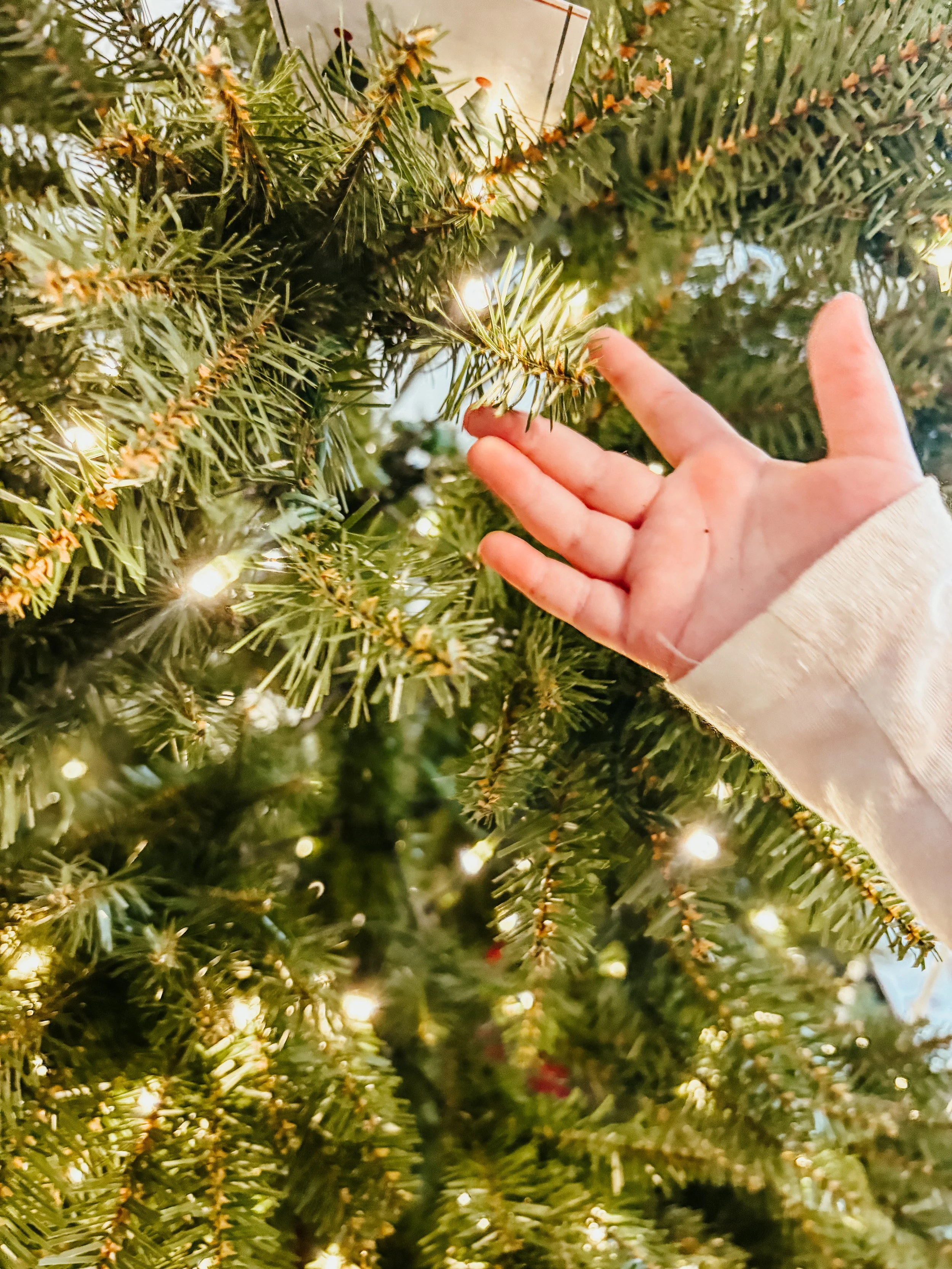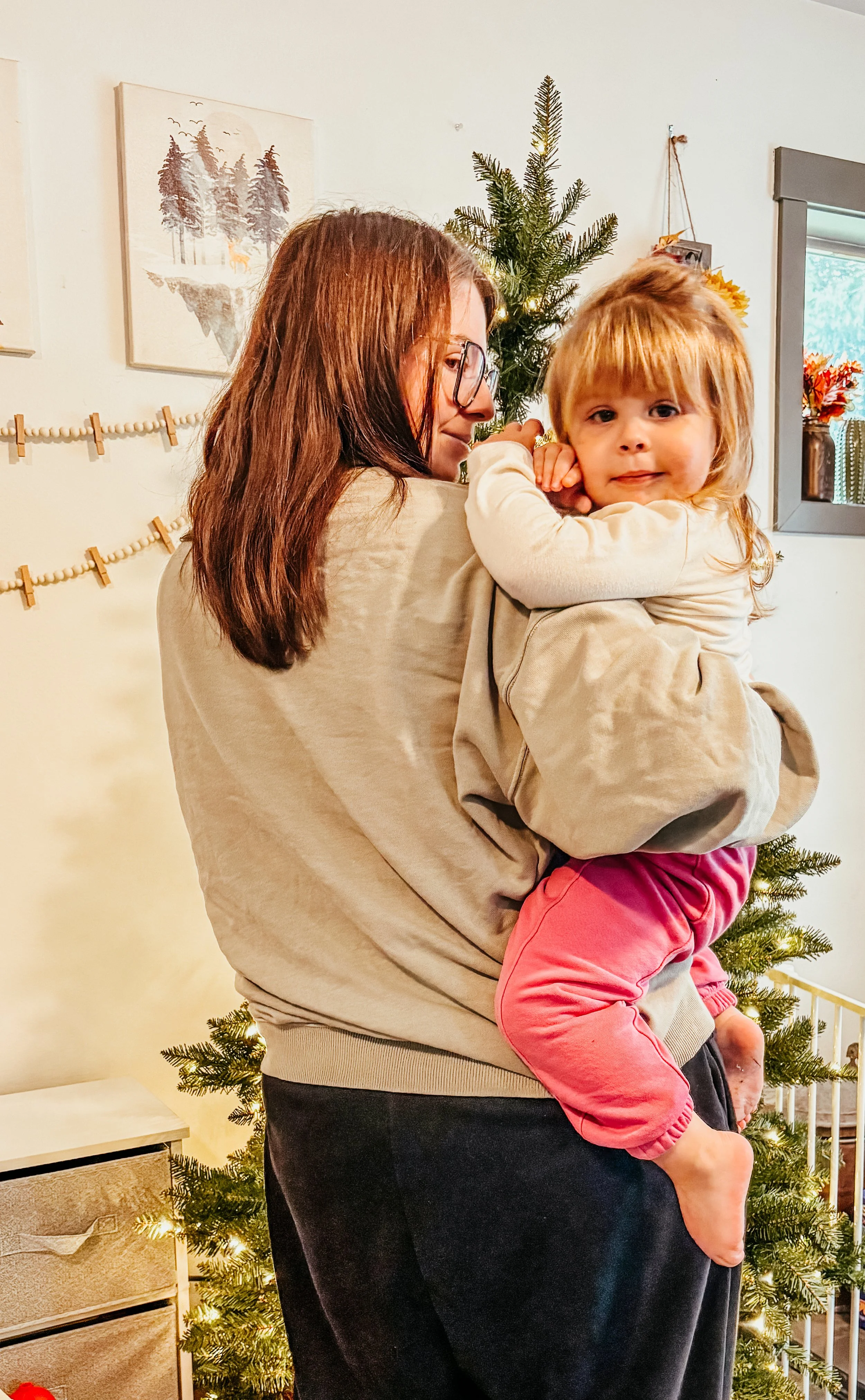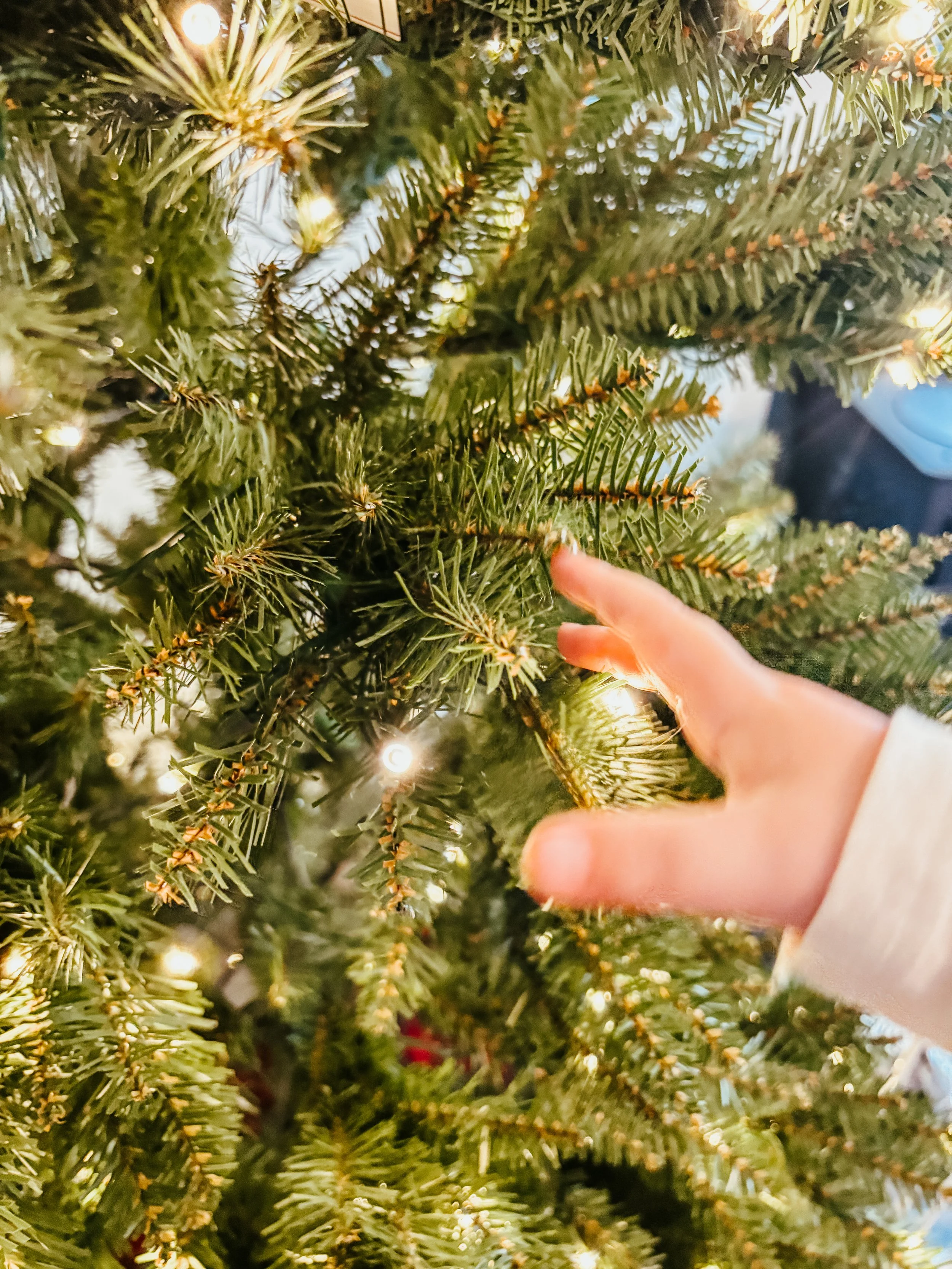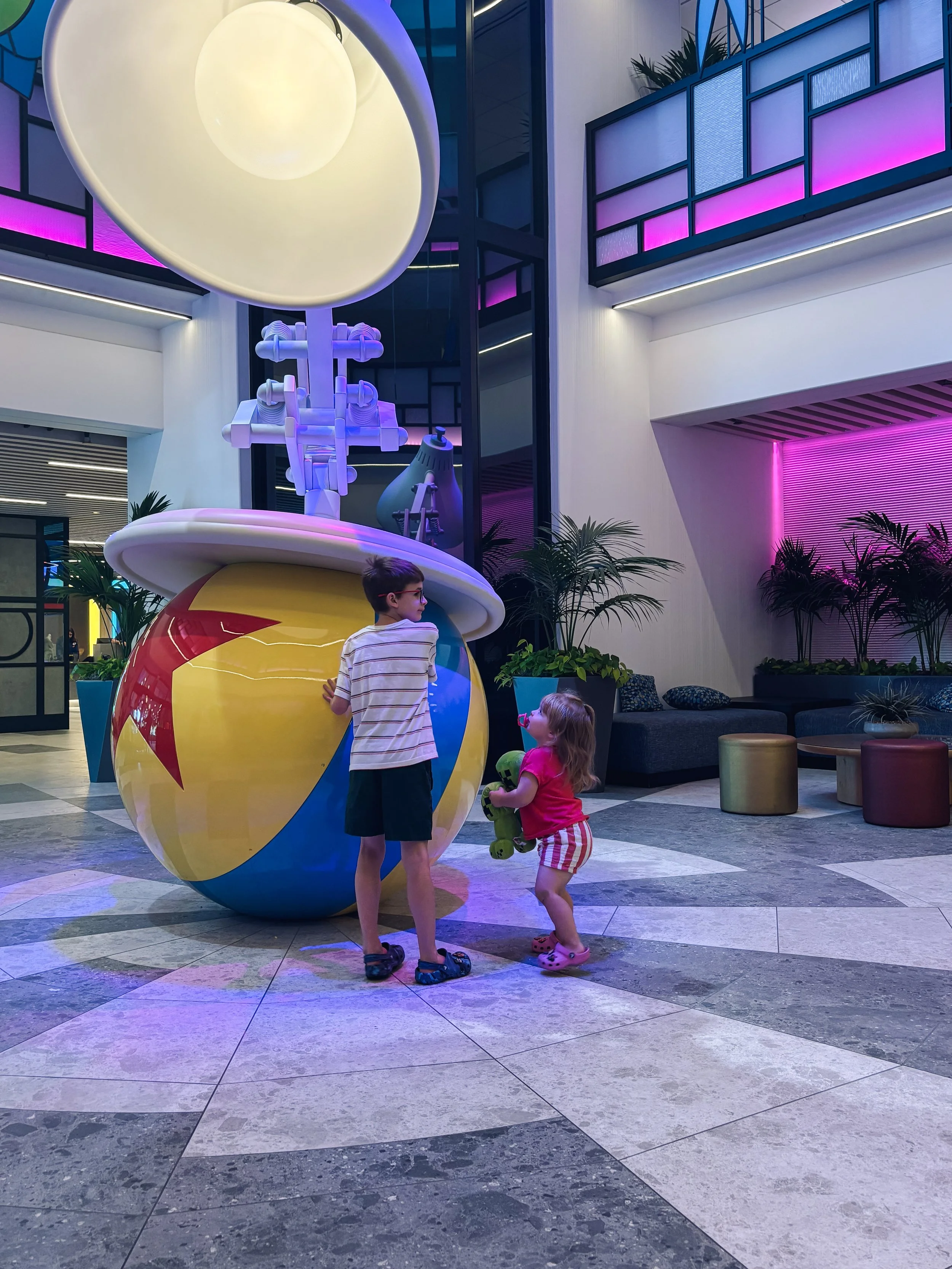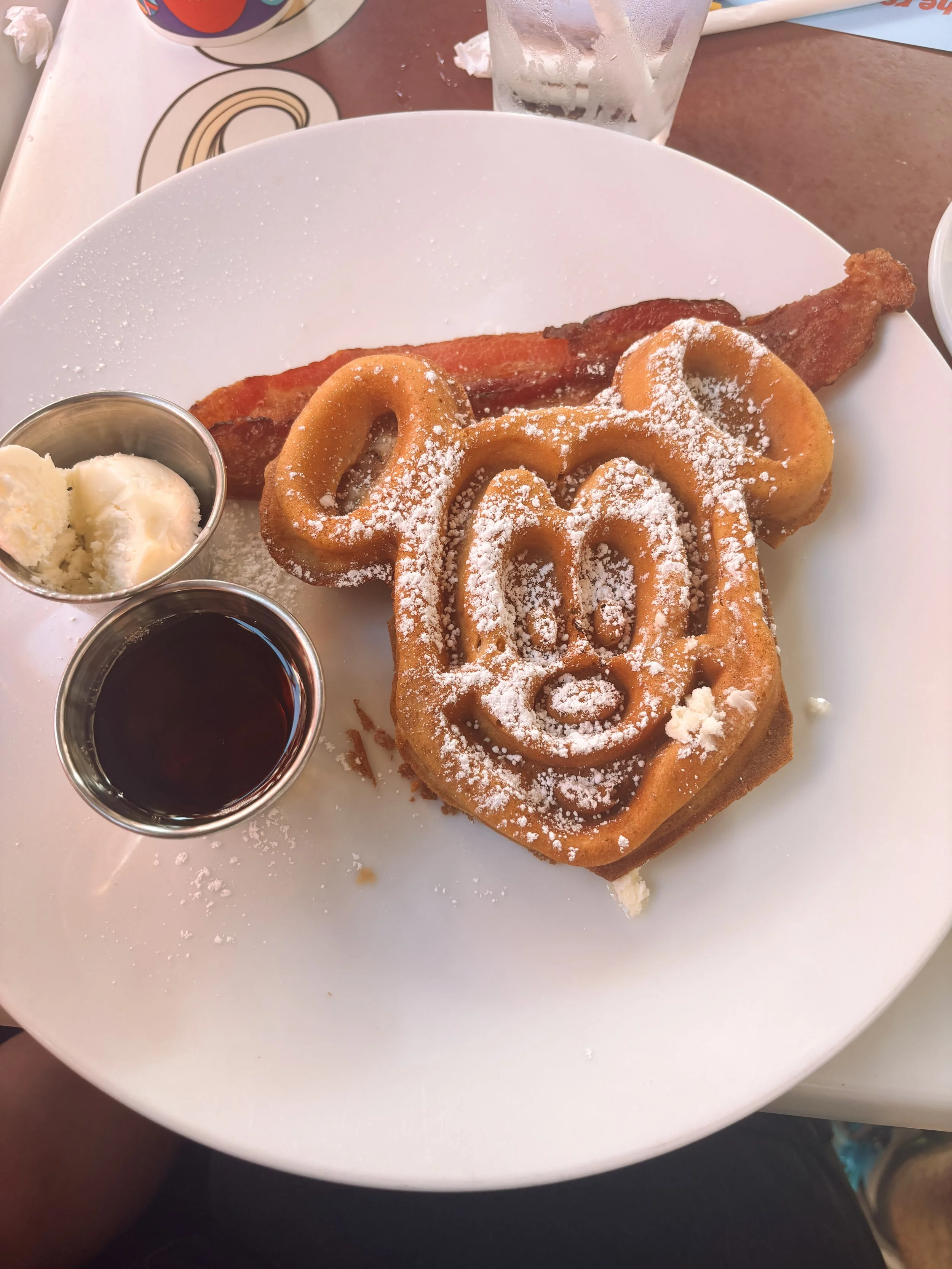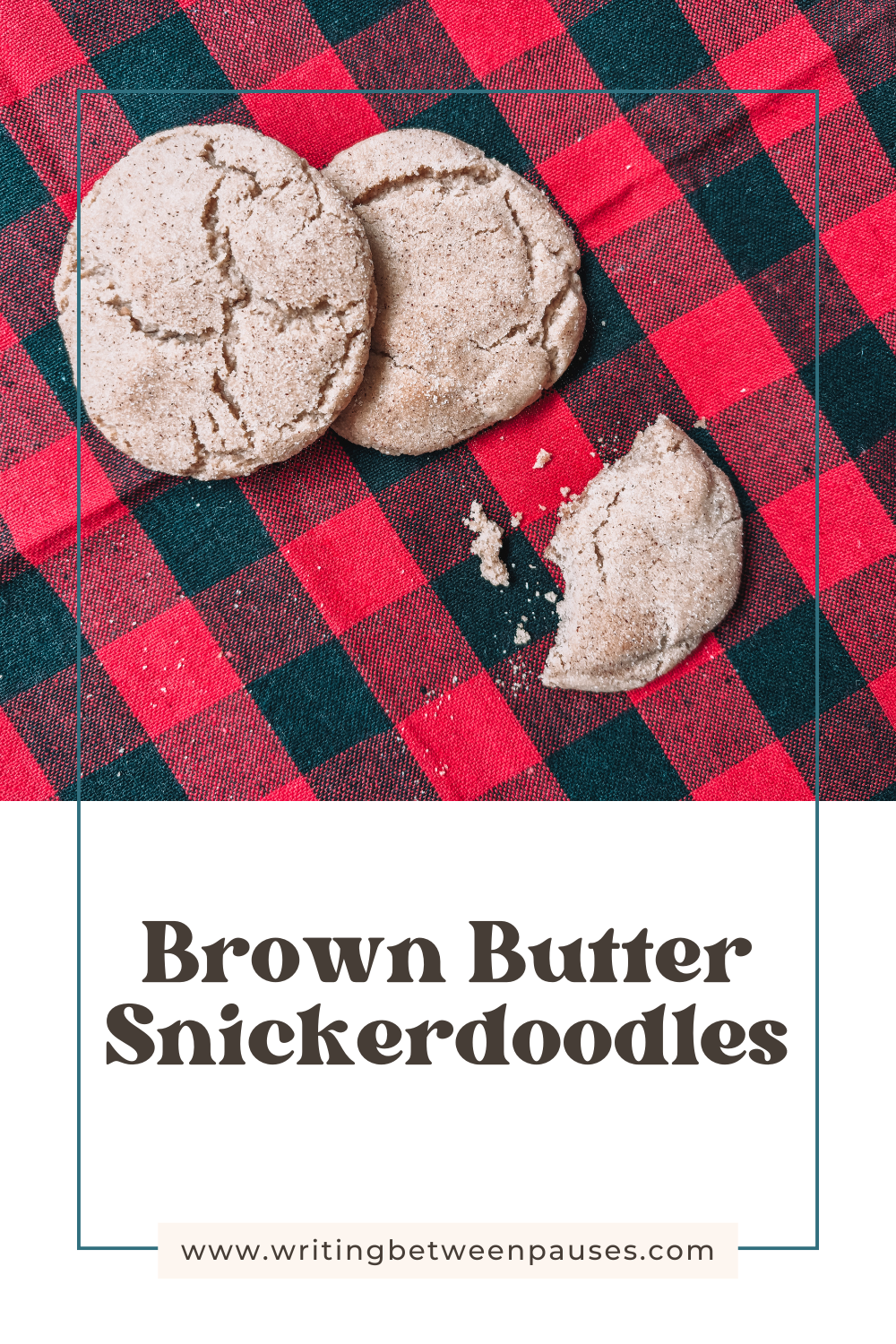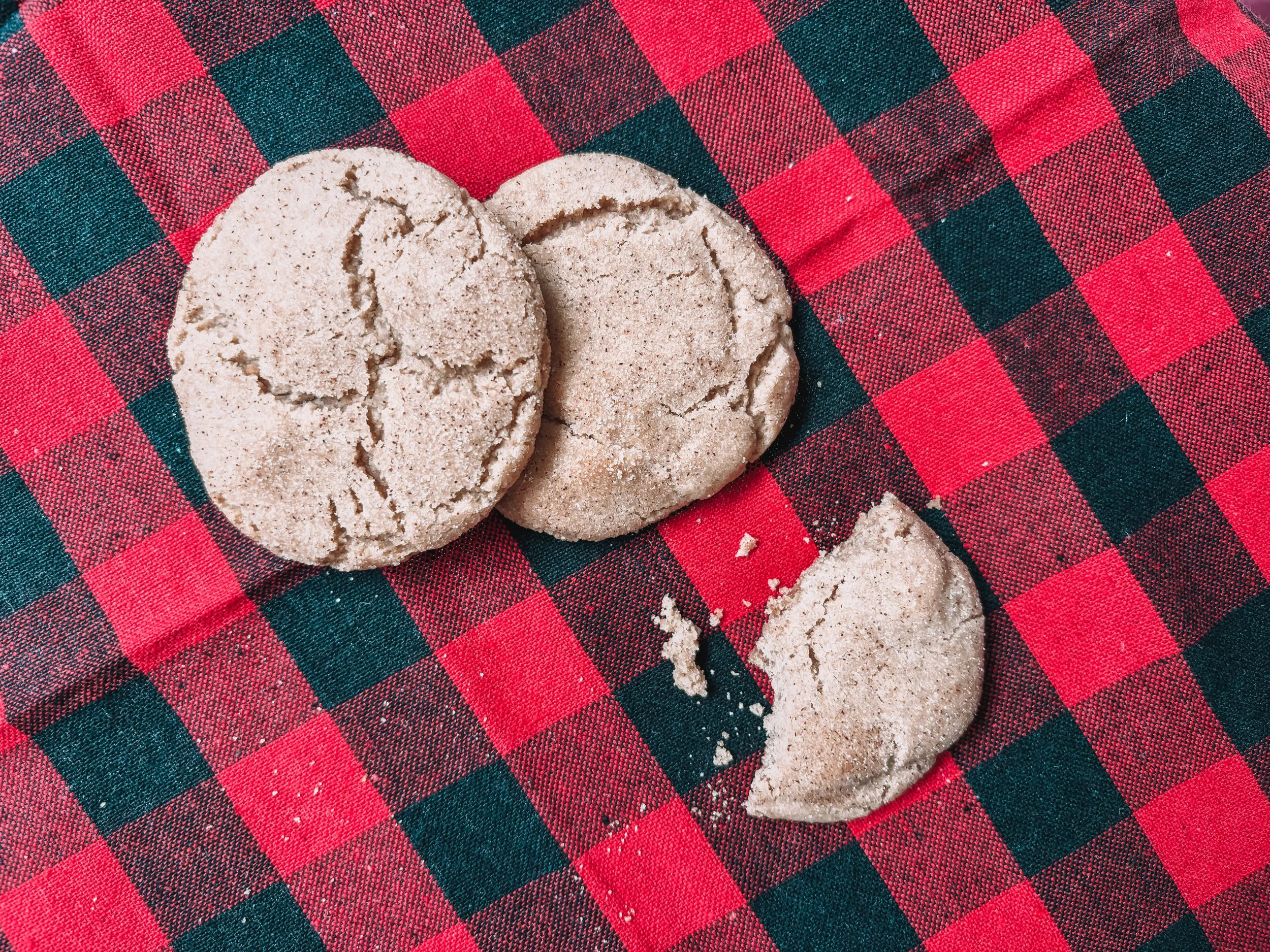The lighting and theming in the lobby is incredible. It’s atmospheric, like being inside a movie itself. There was a gift shop and two dining places on the first floor. One, the Sketchpad Cafe, is a quick service, grab-and-go place, perfect for a quick snack. The other is Great Maple, a sit-down restaurant that serves modern American food. The gift shop did have a selection of merch, plus basic necessities if needed (sunscreen, deodorant, batteries, etc).
Location & Convenience
Pixar Place is located on Disneyland Drive, across the street from the Grand Californian. It is sandwiched between Downtown Disney and Disneyland Hotel. My other unpopular opinion is this: Pixar Place is a shorter walk than the Disneyland Hotel. I hate to say it! It’s true!
There is a walk that takes you from Pixar Pier to a Downtown Disney entrance, close to Din Tai Fung. However, I found that walk pretty long and there isn’t much shade. Our preferred walk was to cross the street and walk through the Grand Californian. (You do need a room key to use this method, so it’s not a hack for other hotels on Disneyland Drive or nearby.) This route is so nice for 3 reasons: 1) the security lines are in the shade (love); 2) at the end of a long day, a majority of the walk is air conditioned; and 3) it’s shorter! This route deposits you into Downtown Disney just beside the Sephora. The perfect entrance, to be honest.
In short, we loved the short walk and the ability to go through the Grand Californian. Pixar Place does have it’s own entry into California Adventure, but we did not utilize this as the hours were pretty wonky; we found out on our last day that Disney will actually be removing this entrance because it is so rarely used by guests.
Room & Amenities
I loved our Pixar Place room. We were on the 4th floor and had a view of California Adventure. At night, we could see the ferris wheel and Incredicoaster all lit up. The layout was very similar to the Disneyland Hotel. There was a bathroom with a large vanity and shower. We had a desk area, a TV, 2 queen sized beds, and a large window. Like the Disneyland Hotel, the headboard for the beds lit up and had interactive elements—always fun.
A big downside here, which I’m sure you picked up on reading that paragraph: there was no bathtub. For a hotel at a park designed, primarily, for kids, you’d think they’d know they need to have a bathtub. But no, it was a gorgeous shower with white subway tile. Which for an adult is great! But most toddlers need an end-of-day bath (especially after Disneyland to get all the sunscreen off) and it just wasn’t possible. That was a big bummer.
The room had a coffee maker, and came with a selection of coffee and some condiment kits that did have liquid creamer in them! That was a new one for me, it’s usually powdered creamer. There was also a “fridge”, by which I mean beverage cooler. I’m fine with a beverage cooler, but I do think it should be labeled appropriately.
The Pool
One thing we always try to do on a Disneyland trip is spend at least one evening in the pool. The Pixar Place pool is pretty renowned for being great; in the evenings, you can watch the fireworks and they include the music from the parks. There are also movie nights, games, private cabanas, and a place to get food and drinks called Small Bytes.
The pool is relatively small, but really fun. There is also a splash pad for younger kids with a tiny pool and a huge slide.
The pros are obvious: lots of kid friendly spaces, lots of room to lounge, great food and drinks.
The cons are this: there is no shade on this pool. It is full on sunshine. The afternoon I took Violet to the splash pad, the sun was so intense that it made the lounge chairs so hot they burned. I could barely see. Even with the umbrellas, it just wasn’t enough; they need to consider some tree shade or an alternative, because it was a lot of direct sunlight, especially during a heat advisory.
Is Pixar Place Worth It?
I really, truly think it depends on what you’re looking for. The price was not bad—I think I would have spent a similar amount anywhere around Disneyland—but I know I could have found something slightly cheaper.
The increased cost came with a few distinct benefits to me:
The path through the Grand Californian is so much better than walking through the blazing sun.
The atmosphere can’t be beat. The characters in the lobby, live music, and kid-friendly parts of the hotel are fantastic.
The rooms are comfortable and I loved having a view of California Adventure.
There are a few downsides that I think are important to consider:
With the loss of early entry and the closure of the Pixar Pier specific entrance, there aren’t really any significant benefits to staying on property. Back in the day, you got an hour early entry, then it was reduced to 30 minutes, and now they’re getting rid of it. There just aren’t any specific perks to staying on property and for some people that makes a huge difference.
The lack of bathtubs in the standard rooms were a huge downside for us.
Would I stay here again? Possibly, I never say never!
Full disclosure, we have already booked another trip in a bit over a year and decided to go with the Cambria Hotel & Suites, which is a newer hotel. It has kid suites with a kitchenette and bunk beds, as well as a complimentary breakfast and several places to eat in the hotel itself. We know we eventually want to stay on property again, but it’s not an every-single-trip thing for us.


